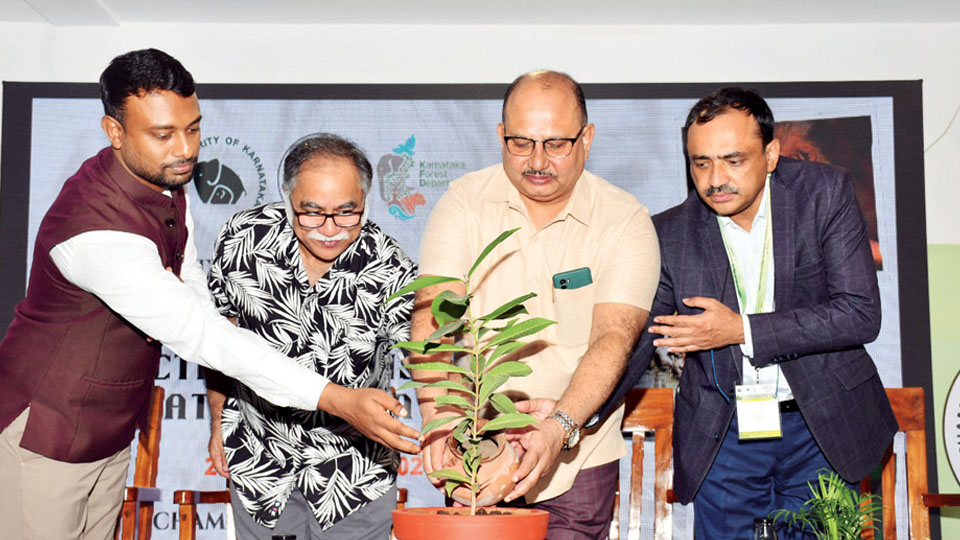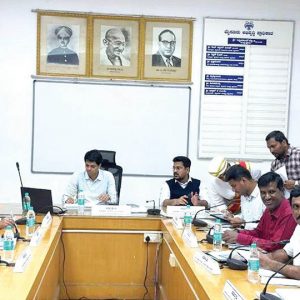Mysore/Mysuru: A two-day seminar on the topic ‘Roaring Forward: Effective Actions For Big Cat Conservation,’ organised on account of Global Tiger Day-2024, was inaugurated at Sri Chamarajendra Zoological Gardens (Mysuru Zoo) this morning.
Delivering the inaugural address, Subhash K. Malkhede, PCCF- Wildlife and Chief Wildlife Warden, opined that in the present days, big cats, irrespective of tigers and leopards, are facing numerous challenges, with the increase in their population, ending up in man-animal conflict.
The incidents of man-animal conflict involving leopard is more, as witnessed in several districts including Mysuru, Mandya, Bengaluru, Tumakuru, Kolar and Ballari in the State. That apart, we have spotted the movement of three to four tigers in the outskirts of Mysuru city, with one spotted near Srirangapatna, he said adding that recently, a tiger met its tragic end near Mandakalli on Mysuru-Nanjangud Road.
“The relocation of animals rescued in different operations and released in tiger reserves should also be discussed for posing several issues. During the seminars, we should also discuss about, where Section 11 of Wildlife Conservation Act, should be amended. If the leopard bred in urban areas are shifted to core areas, it will give rise to new set of problems. Hence, we should delve more into Section 11 of the Act, involving scientists, wildlife experts and senior officers, in the discussion,” suggested Malkhede.
The issues related to tiger reserve areas and big cats conservation should be taken into serious consideration. As in last four to five Tiger Census, it has come to note that there has been an increase in tiger population across the country, including Karnataka. We should resolve to keep their numbers intact and throw more light on the conservation aspects of tigers, said Malkhede.
In his keynote address, Dr. Qamar Qureshi, Scientist, Wildlife Institute of India (WII), Dehradun said, “Apart from discussing about big cats and their conservation, we should also discuss about tiger corridors and re-linking them, to cater to the increase in animal population. The animal corridors should be maintained, as in the tiger reserves at Sariska in Rajasthan and Panna in Madhya Pradesh, when we laid more emphasis on developing grass lands, the whole scenario of the tiger reserves changed.”
“Since 2011 to 2024, among the National Tiger Population, we have been witnessing several changes in the methods of documentation. Earlier, we were manually collating the data of tiger population in different languages and translated later to a single language, spending a significance amount of money and time. Now, with the help of Apps and Camera Traps, we have been estimating the tiger population, incorporating scientific method, making the complete report ready within a stipulated time,” he stated.
Dr. Sunil Panwar, Member Secretary of Zoo Authority of Karnataka (ZAK) said, the seminar assumes significance, as it is related to man-animal conflict and the scientific methods, ecological management and their role in big cat conservation.
The inaugural session was followed by a series of lead presentations and oral/ poster presentation on three themes of the seminar — “Ecology and Conservation,” “In-situ and Ex-situ Management” and “Current Challenges and Future Prospects.”
Mysuru Zoo Executive Director D. Mahesh Kumar was also present. The seminar will conclude tomorrow.








Recent Comments